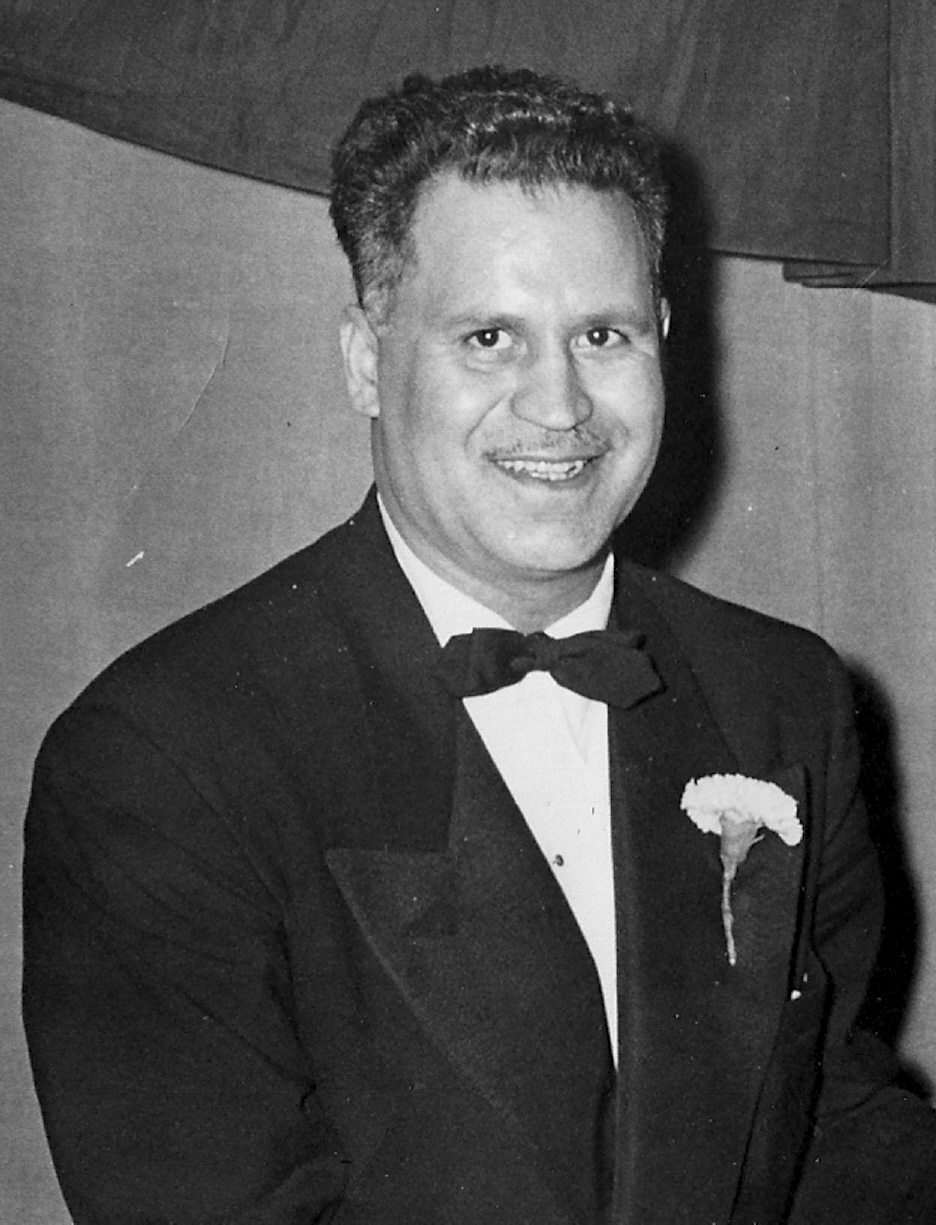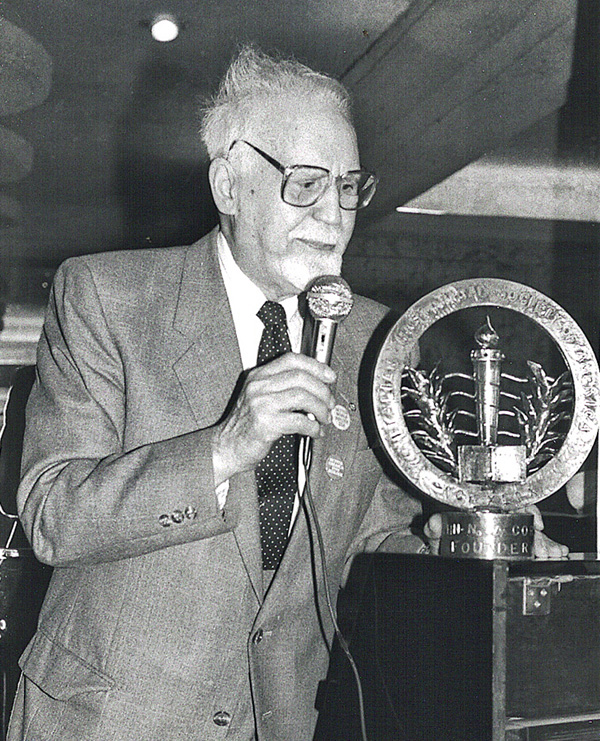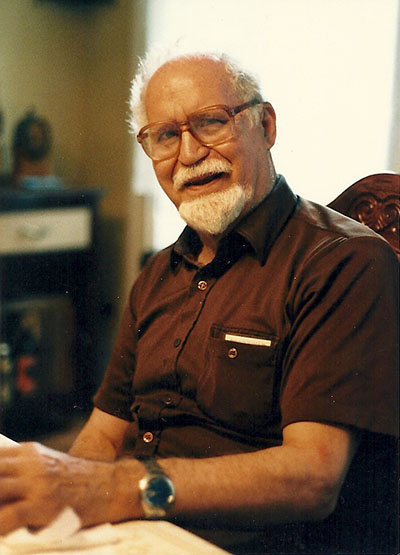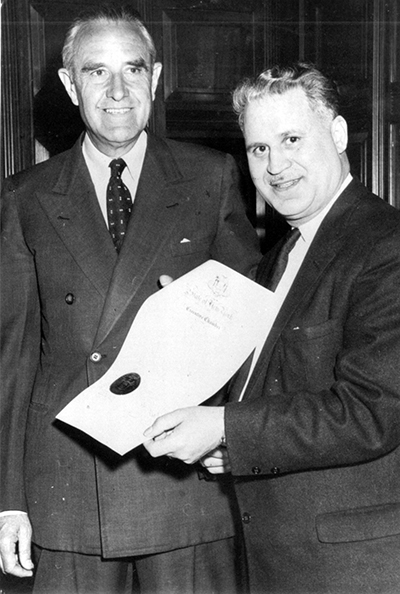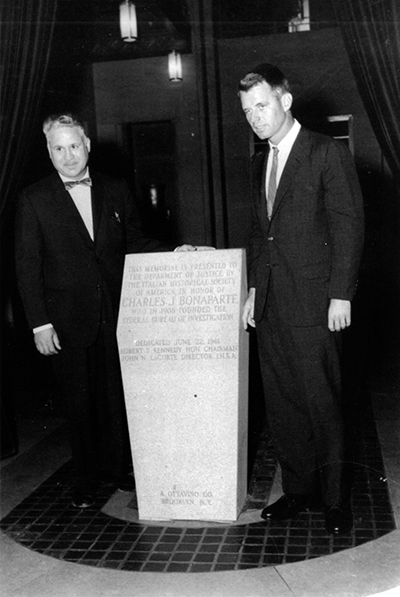He started off with selling pencils and shoelaces on street corners. The force of his personality was quite engaging and although this by itself could not provide a living, he was able to develop confidence in his abilities. Someone told him that there was a new cleaning device called a "vacuum cleaner" that he might be able to sell and make somewhat more than his profit from pencils and shoelaces. He saw that other salesmen were going door to door, selling the vacuum cleaners with mixed success. Being the creative salesman, he devised another strategy, one that would be far more effective.
He knew that the individuals he had to convince to buy his product were housewives, but it was the Depression. In these very hard times few people would be willing to purchase the machine, particularly in a period of frugality and it was assumed that cleaning by broom, dustpan and perhaps a hand pushed rug cleaner were sufficient. LaCorte created his strategy.
He knew that virtually everyone would take on the chore of cleaning the house on Saturdays. He also knew that there were concentrations of several families in the apartment houses that populated New York. Three, four, and sometimes five-story walkups would have three or four families on each floor. In these small units, most families knew each other, particularly the wives.
So on Saturday afternoons, close to the time when cleaning chores were approaching completion, LaCorte would knock at the door of an apartment. The lady would appear at the door, and in his broken English he would say, "I wanna clean you house." Indignantly, the response would be something like "Well, I have already cleaned it, thank you very much!" But fundamental to LaCorte's approach was the motto, "Never take 'no' for an answer." This would serve him well later on with the opposition he met with Robert Moses, the Master Builder of New York City – but that will be several decades later. For the moment, he had to deal with an individual virtually as formidable. "No, no, you no understand … I bring in my machine … I clean you house, no charge … free. Please let me show you … no take long." Realizing that it would be difficult to turn this precocious fellow away, the lady of the house would reluctantly admit him.
"I’a show you inside of the machine." LaCorte would then take out the dirt collection bag in the vacuum cleaner and show that it was completely empty. Then he would proceed with his vacuuming getting into every nook and cranny, going over the carpets and rugs. Fifteen or twenty minutes later, he would announce that he was finished. At that point, he would go into the middle of the living room, open the vacuum cleaner and summarily dump the contents of the collection bag onto the middle of the floor. The housewife would, inevitably, get very indignant and say something like "Who do you think you are, dumping that dirt in my house?" "Ma Sigiorina, thisa is you dirt!"
It would take a few moments for the poor housewife to figure out what had happened. Clearly, this impudent salesman has collected a great deal of dirt that she never even knew existed. More often than not, the sale – on an easy payment plan – would be completed. Word would spread quickly through the apartment building and LaCorte was sure to follow up with the rest of the tenants. He sold a lot of vacuum cleaners.
LaCorte proved to be just as creative with another new invention, the electric refrigerator. Again targeting apartment houses, he would knock on the door of each tenant, offer to install the refrigerator for a few weeks, and then he would return to pick it up. No charge. No obligation.
Refrigerators at that time were kept cool by a constant supply of ice delivered by the iceman who would appear as regularly as the milkman. The ice would be placed in a compartment on top of the refrigerator and as it gradually melted the water would have to be drained off. It required constant attention. However, the new electric refrigerator, aside from defrosting every few weeks, required no attention and no work. It was the ultimate convenience.
A few weeks later, LaCorte would return, knock at the door and say, "I taka back the refrigerator now." "Not on your life, buster …how much is it?" The refrigerator, more than the vacuum cleaner, became a status symbol that most – even in the depth of the Depression – could not do without. Virtually everyone in the building bought a refrigerator from this Italian fellow whom they could barely understand.
LaCorte's selling talents were quite evident and a salesman for the New York Life Insurance company suggested that perhaps he could sell insurance, a profession which provides much greater financial rewards than anything he had sold before. LaCorte seized the opportunity with the same energy and creativity with which he had approached selling vacuum cleaners and refrigerators.
From the 1930s to the 1950s, services were still very much centered on the home and family – there was the family doctor, the milkman, the mailman. Even eggs, fruit and vegetables were delivered by merchants meandering up and down residential streets; and, of course. there was the iceman, at least until the electric refrigerator displaced the need for home-delivered ice. Joining these ranks was a new service brought to the family, the insurance man. This was a niche into which LaCorte was a perfect fit. His focus was Italian families, immigrants and their children who succeeded in achieving the American dream of economic success. He would apply a timing approach similar to the one he used with selling refrigerators – this time it was Sunday afternoon.
On Sunday afternoon, there was not an Italian family worth its salt that did not have a large pot of tomato sauce simmering on the stove as part of its multi-course repast – a Sunday meal around which the entire family would assemble. This gathering was the perfect venue for LaCorte to appear. So every Sunday, before participating in his own Sunday feast, he would visit homes of his prospective customers, convincing the entire family of having a life insurance policy to help in the event if, "God forbid," someone passed away.
His native Italian was an asset, and he went into the homes of his potential clients to present to them the benefits of having a five- or ten-thousand-dollar life insurance policy for a dollar or two a week. Additionally, being fluent in Italian and becoming increasingly competent in English, LaCorte was able and willing to take the role of liaison between the families and the immigration authorities to facilitate the process to American citizenship. He liked helping people and providing services in areas where they had difficulty helping themselves. It also brought him great satisfaction because this was a role that his father had proudly played in his native hometown in Sicily.
As time went on, LaCorte increased his clientele. He advanced as a salesman in New York Life Insurance Company, qualifying among the top producers every year. He worked hard and made the possibilities of America a reality for him. During this time, he met a young woman by the name of Marion who herself was unique and talented and a pioneer in her own right. Her intelligence and ability at detail, as well as her secretarial skills, provided her with the knowledge and experience for advancement in the United States Steamship Lines, where she became executive assistant to one of the Vice Presidents – an extraordinary accomplishment since these positions in the 1930s were reserved for men.
When John and Marion married in 1937, a new collaboration began. LaCorte had created a considerable client base in his life insurance sales. There was a great potential for general insurance, fire, auto, business liability, and other types of insurance. Marion decided to acquire a general insurance license and together they established the LaCorte Agency and opened an office at 26 Court Street in downtown Brooklyn, New York.
From here, LaCorte was able to expand in business and in his influence in the Italian and Italian-American community. Having achieved financial success and security, he once again became restless to do something of importance in his life. Not about to simply sit back and rest on his laurels. LaCorte began to find a challenge in the Italian community in which he worked. The 1930s and 40s was an era in which – in popular culture – associations were made with Al Capone, a Chicago mobster, the Mafia, and all Italians. These stereotypes fed into projections of inferiority toward Italian immigrants. The vast majority of the Italians who had immigrated to America were poor and uneducated, just as LaCorte had been. In attempting to assimilate into American society, they were looked down on and disparaged much like the Irish who had preceded them in great numbers earlier in the nineteenth century.
LaCorte was proud of his Italian heritage. He knew of the great Italians who had made significant contributions to society. Already it was widely known that Guigliamo Marconi was a significant figure in the creation of wireless telegraphy, later to become known as "radio." LaCorte, of course, knew of the great Italian explorers – Marco Polo, Columbus, Vespucci, Cabot(o) – as well as many other well-known Italians: DaVinci, Michelangelo, Puccini, Verdi, Galvani, Volta, and many others. During this period, LaCorte came across a book entitled Four Centuries of Italian American History by Giovanni Schiavo. This was an extensive work, documenting the contributions of many individuals of Italian heritage, most who were generally unknown, such as Giovanni da Verrazzano, the Italian navigator who discovered New York harbor 81 years before Henry Hudson.
According to LaCorte’s often-repeated account, he was marching down 5th Avenue in the St. Patrick’s Day parade and happened to notice a building identified as the American Irish Historical Society. This set LaCorte’s mind into action, and he asked himself, “Why can’t there be an Italian Historical Society?” For LaCorte, the question would not remain unanswered for long – his response was to create one. He never flinched or hesitated; he had formulated the idea and it would happen. A few years later, in May 1949, at the Brooklyn Academy of Music, LaCorte gathered several hundred individuals, Italians and other nationalities, together for the first time to officially create the Italian Historical Society of America. Its motto: “To help perpetuate the names of those of Italian Heritage who have contributed to the advancement of humankind and inspired others.”
The creation of the Society would provide LaCorte with the foundation to help counter all the negative stereotypes that came to be associated with Italians – a mission that remains just as viable some 100 years after his birth. From the foundation of the Society and armed with Schiavo’s considerable research, LaCorte began to implement his objectives. Primary on his list was Giovanni da Verrazzano; Antonio Meucci; Constantino Brumidi, the Michelangelo of the Capitol; and Charles Bonaparte, founder of the investigative wing of the U.S. Department of Justice.
One of his first accomplishments was the resurrection of the Verrazzano Monument that was created in the early 1900s, put on display, and then hidden away and forgotten due to some construction. It was LaCorte’s singular effort that brought the magnificent monument out of storage and prominently placed in Battery Park at the tip of lower Manhattan. From 1952 on, the Society held an annual ceremony at the monument on April 17th, that – through LaCorte’s efforts – was officially designated as Verrazzano Day. Little did LaCorte know at the time that his greatest battles and his crowning achievement would follow some ten years later, with the naming of a bridge that would span the narrows through which Verrazzano passed in 1524, connecting Brooklyn and Staten Island. Due entirely to LaCorte’s efforts, in 1964, the bridge was officially named the Verrazano-Narrows Bridge.
Charles Bonaparte was Secretary of the Navy while Theodore Roosevelt was president in 1906. It became apparent, that the Department of Justice, in addition to its prosecution responsibilities, required an organization devoted to investigation – later to be known as the Federal Bureau of Investigation. Roosevelt chose Charles Bonaparte to found and organize this unit. LaCorte felt it was important to propagate this information since, in the 1950s, it was generally believed that J. Edgar Hoover was the founder of the FBI. With his typical vigor, LaCorte pursued having a Charles Bonaparte monument placed in the Department of Justice. LaCorte accomplished this at a ceremony in the Great Hall of the Department of Justice with Robert Kennedy, Attorney General of the United States in attendance.
LaCorte's interests were not confined exclusively to Italian causes. While maintaining his position as an award-winning producer for New York Life Insurance Company, he extended his attentions to many other areas. For several years during the 1960s and 70s, each June in Prospect Park, LaCorte sponsored Nationality Day, where children from the many nationalities in New York gathered to dance their ethnic dances; Irish, Chinese, Indian, Italian and many, many others were represented.
Additionally, LaCorte created the Motorist League to help protect the rights of the driving public, an organization for real estate owners, an organization seeking to create an Italian old age home, an Heraldic Society, and a travel agency. All these would achieve some level of success. But ultimately, it was the Italian Historical Society of America that became the single project through which he attained his greatest achievements.
In 2007, a memorial monument acknowledging the work of John N. LaCorte was erected in John Paul Jones Park, at 99th Street and 4th Avenue in Brooklyn, near the anchorage and Brooklyn entrance to the Verrazzano Bridge. The memorial forms a place of contemplation where one can read of LaCorte’s accomplishments and marvel at the majesty of one of the longest suspension bridges in the world – that through LaCorte’s perseverance, is named after an Italian explorer.
